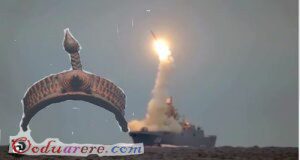Iran’s economy was always state-run, but 1979 made it for the People’s benefit
I think you’ll agree we have a lot of 20th century economic uniqueness to recap:
No colonial structures, total state planning of the economy, protectionist policies to promote Iranian development, no colonialist class nor any compradors working with them, a tiny domestic bourgeois, a weak & unstable military, two monarchs who were wary of foreign capitalists, let’s not forget the Islamic importance of charity, let’s not forget that Islamic financial rules preclude the rapaciousness of Western financial rules: Iranian economic development has never been typical, and thus resists the usual cliches. Use them and reflect your ignorance, and render your ideas useless to Iranians.
Clearly, there were totally different social forces at play which produced very different groups from the types even Marx imagined. Iran was, and still is, unique – for better or for worse.
Iran thus developed more like South Korea, where the Park military dictatorship decided the economic plan and controlled a small bourgeoisie’s relationships with foreign capital with the same strictness as the English did for an 18th century colonial subject. The huge difference is that in Iran the state was the main driver of growth, and not private industry.
And this explains other huge differences: such as why South Korea is filled with US troops, whereas all the US bases dedicated to subjugating Iran are around & not inside Iran. South Korea’s commitment to capitalism also explains with US corporations are all over South Korea, whereas in Iran you buy “Niks” and not “Nikes”, and you shop at the bazaar and not Wal-Mart.
South Korea is a common comparison for Iran, but incorrect: the best comparison is China. I elaborate – and only partly, because there are just so many common experiences, beliefs & institutions – in the 4th part of this series: Structural similarities between Iran’s Basij and the Chinese Communist Party.
However, South Korea and then Iran are the two nations whose UN Human Development Index increased the most from 1990-2014 – absolutely no small feat for either one, and certainly lessons regarding protectionism against foreign capital abound. Ignore that statistic at your national peril.
(I have often cited this UN statistic regarding Iran to show what all Iranians know and what likely forms the basis of the Revolution’s solidity in 2018: since the war ended the government has massively succeeded in transforming Iranian society for the benefit of all.)
So by the end of the 1970s the state WAS the capitalist sector – they owned it all, and much of what they didn’t own outright they controlled informally. This also means that Iranians have always seen the state as the natural driver of a centrally-planned economy; or at least they certainly have been prepared for the socialist concept of central planning and central ownership as much as any other country.
The problem under the Shah was: it was not for the People’s benefit – not enough economic redistribution of wealth. The 1979 Islamic Revolution obviously changed that, and only a liar, racist or anti-religion fanatic would deny it.
Given all these facts, the economic heritage of the Islamic Republic of Iran is difficult to define, but we must agree that Iran under the 20th-century shahs was nothing like a “bourgeois capitalist state”, “colonialist state”, nor a “neoliberal capitalist state”. Hooray for us!!!!!!!!! But down with the shah!!!!!!!!
This section should make clear that Iran’s revolutionaries thus inherited an economy totally ripe for total nationalization, as well as an economic mindset which had known nothing other than nationalisation and central planning. This was a huge advantage which has produced the vast redistribution of wealth post 1979 in Iran. Whether this was luck, the good grace of geographic determinism, Iranian ingenuity or some other force is not important – who cares about credit? What’s important is to see things clearly in order to understand Iran from now on, because what I have mostly read in the West is a bunch of ill-informed nonsense.
The oil boom of the 1970s threw the Shah’s 1%-centered system into crystal-clear relief, and so it was scrapped in favor off Iranian Islamic Socialism.
And that is where things get even more economically different!
Is Iran the most state-run economy in the world today?
You will have to read the next part of this series to get the complete answer, but I can only think of one country who might have more state control….
The Shah and his coterie, which controlled 70% of the nation’s capital – came entirely under revolutionary national control. This percentage of state control would, amazingly, go significantly higher in the coming years.
I do not expect that non-Iranian & non-economic (& non-good) journalists know the basic outline of economic history in Iran, but it is amazing that they do not know that Iran’s current economy is not only centrally-planned but almost entirely centrally owned…because for nearly 100 years of modern history the vast majority of Iran’s economy been under national control! This is not a new event! Tap tap tap – hello? Is this thing on?
Anyway…moving on.
1979 certainly wiped out the undemocratic state planner (the shah), the bourgeois class (reading this from Beverly Hills) and put Islamic Socialist revolutionaries in charge: they were tasked with creating & implementing a completely new system unseen in history…and that they did.
It had to be a “new system unseen in history” because the Iranian revolution was not just intensely nationalist and Islamic: there was an uber-intense demand to decouple from the entire international political system. This necessarily meant decoupling from capitalism as much as possible.
Indeed, because there was this popular demand to decouple from capitalism Iran’s nationalism could never – and is never and should never – be called “fascism” or “reactionary”. Khomeini’s “Neither East nor West but the Islamic Republic”, is no mere slogan, but an ideology of both independence and revolution; most Western nationalists don’t want revolution but merely independence, and this makes them neo-fascists. Tap tap tap….ah fuggetaboutit.
That anti-capitalist goal was undoubtedly met and preserved: Today, Iran is incredibly un-globalized, and at the bottom of all such tables ranking international economic connectedness. You can buy a fine pair (for the price) of Niks, however.
All of Iran’s economic planning and development remained state-planned and state-owned, but here is the difference: pre-1979, there was no talk of redistribution, of economic justice, of social justice, or of anti-privileges; post-1979, this was the state philosophy.
There can be no false claims that Iran’s “Islamic economy” isn’t a welfare state deeply concerned with social justice; it sits fundamentally opposed to the neoliberal model. To implement this is why Iran’s economy remains so controlled by the state, both constitutionally, in practice & informally.
But Westerners don’t have the facts about Iran’s unique (revolutionary) economic structures. I concede that uniqueness does complicate easy understanding. They aren’t even told about Iran’s massive success in redistribution – who would explain Iran’s economy in 2018 in the West?
What this final section, and all of the next part, will show is how Iran took the existing state capitalist model and built upon it something totally new – Iranian Islamic Socialism.
Background for the bonyads, because there is no Western parallel
Forty years is long enough to have realised that Iran’s economy is structurally totally different.
There is massive, massive, MASSIVE misunderstanding about unique (revolutionary) economic structures & ideas which are inadequately described as the “Third Sector” (the first two sectors being “Public Sector” and “Private Sector”). Clearly, I am not discussing the “Second Economy / Black Market”, which is a different sector.
If this “Third Sector” phrase is unique to you, it is likely because this is a sector which does not have a Western parallel.
Frankly, a better name is the “1B Sector”, because it is entirely accurate to say that this is a part of the Public sector. I will use “1B Sector”, a new term, because it is accurate.
(Being Public Sector is like being pregnant – you can’t be “just a little of either”. Well, actually you can – 20% is considered a controlling stake in a company, and a state can certainly have less than that. However – and this is detailed in the next part – Iran never goes less than 51% state control in seemingly anything, and certainly not any industry of even moderate importance. BP tried that with us – Iranians were not converted. So…perhaps it’s: “Being Iranian Public Sector is like being pregnant…”, but I will stick with the phrase “1B Sector” in this series.)
No account of Iran’s economy can be complete without these so-called “para-statal” organisations which are…under the government’s control. I will explain one of them, the bonyads.
When the WSWS penned this extremely broad and unexplained generalisation – “huge sums paid over to the Shia religious establishment” – I assumed they were talking about the state religious charity cooperatives (bonyads), for which it is very difficult for Westerners to even conceive of.
To put it briefly: The bonyads became major economic factors when the Islamic Republic of Iran nationalised the assets of the Shah and his 1% and…gave them to charity.
Totally pure capitalism from those hypocritical Iranian Islamic Socialists, right? It’s amazing all the hardcore neoliberal capitalism charities get up to, we all know!
That is how around 10-20% of the Iranian economy came under the control of state religious charity cooperatives. However, the administrative apparatus of the bonyads can go back 1,200 years – these are embedded, grassroots organisations.
Let’s first quickly talk about the role of charity in an Islamic economy – it is much more than just some free soup. Many Iranian politicians even talk of Iran being an “alms-based economy” (which seems like a stretch to me…but I certainly get it).
Charity will always have a significant role because of zakat – the Islamic practice (one of the Five Pillars) of giving 2.5% of your profits to charity. In Iran, this is a voluntary decision, and the giving is to imam-sponsored instead of state-sponsored collectors (unlike some Muslim countries). $1 billion was given in Iran via zakat last year, but not all zakat is reported, so it is likely much more. There is also khum: Muslim businessmen (especially Shia) are expected to give 20% of their profits to their local mosques for charity. I have no figure on khum, but you get a good khum and you can build a new mosque or something overnight (this leads to perceptions of “Millionaire Mullahs”, which I will address later). This works just like for Jews in the West: religious people come knocking on the door of your (Jewish-owned) shop and ask you to give some of your profits to support the community – it’s certainly not capitalist. Nor is it what some readers are thinking – “religious extortion”: Extortion is for personal and criminal gain – not community gains; you have made your profit off the community, after all. An underlying rationale for both of these economic levers is the idea that religious people can provide welfare as well as the state – that has certainly been the case in Iranian history.
So the bonyads were already needed and useful in Iran – the Revolution made them here to stay.
 Ọmọ Oòduà Naija Gist | News From Nigeria | Entertainment gist Nigeria|Networking|News.. Visit for Nigeria breaking news , Nigerian Movies , Naija music , Jobs In Nigeria , Naija News , Nollywood, Gist and more
Ọmọ Oòduà Naija Gist | News From Nigeria | Entertainment gist Nigeria|Networking|News.. Visit for Nigeria breaking news , Nigerian Movies , Naija music , Jobs In Nigeria , Naija News , Nollywood, Gist and more







